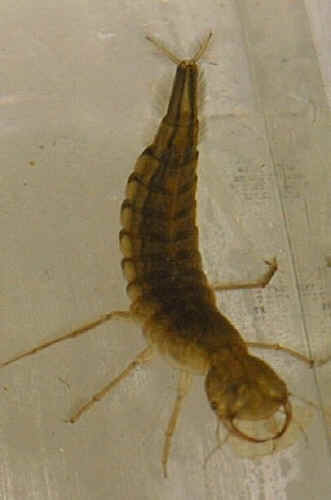 |
Great Diving Beetle larvae
are the young stage of a large water beetle. They live in freshwater ponds and are fierce carnivores. The large, pointed, sickle-shaped jaws are sunk into the prey like hypodermic needles. Digestive enzymes are pumped into the body of the prey and the resulting 'soup' is sucked back up. Great Diving Beetle larvae will eat anything they can catch. Their favourite prey includes tadpoles and any other insects within reach. They are also cannibalistic and will eat other Great Diving Beetle larvae. Large larvae in the final stage before pupation, are of sufficient size to even catch and eat small fish. The larvae often appear scorpion-like in the water because they move about with their tails extended vertically upwards. They will frequently push the tail up through the water surface to take in atmospheric oxygen through the terminal spiracle (air-hole). |
